-
 Bitcoin
Bitcoin $107,275.1551
-0.32% -
 Ethereum
Ethereum $2,485.3056
1.77% -
 Tether USDt
Tether USDt $1.0005
0.03% -
 XRP
XRP $2.2223
1.31% -
 BNB
BNB $657.7608
1.39% -
 Solana
Solana $156.3566
3.02% -
 USDC
USDC $0.9999
0.01% -
 TRON
TRON $0.2791
1.09% -
 Dogecoin
Dogecoin $0.1651
0.45% -
 Cardano
Cardano $0.5738
2.78% -
 Hyperliquid
Hyperliquid $40.2672
5.82% -
 Bitcoin Cash
Bitcoin Cash $517.5487
5.30% -
 Sui
Sui $2.7981
-0.40% -
 Chainlink
Chainlink $13.3500
-0.36% -
 UNUS SED LEO
UNUS SED LEO $9.1220
1.12% -
 Avalanche
Avalanche $17.9515
-0.32% -
 Stellar
Stellar $0.2361
-0.44% -
 Toncoin
Toncoin $2.9423
2.33% -
 Shiba Inu
Shiba Inu $0.0...01145
-0.68% -
 Litecoin
Litecoin $86.1693
-0.63% -
 Hedera
Hedera $0.1493
0.64% -
 Monero
Monero $315.1374
1.81% -
 Polkadot
Polkadot $3.4002
-0.73% -
 Dai
Dai $1.0001
0.03% -
 Bitget Token
Bitget Token $4.5413
-1.35% -
 Ethena USDe
Ethena USDe $1.0002
-0.01% -
 Uniswap
Uniswap $7.1733
-0.57% -
 Aave
Aave $274.0465
-0.23% -
 Pepe
Pepe $0.0...09810
2.24% -
 Pi
Pi $0.5101
-3.10%
Is the morning star pattern with the moving average adhesion bullish?
The morning star pattern, when combined with moving average adhesion, offers a high-probability bullish reversal signal in crypto trading.
Jun 30, 2025 at 09:15 pm
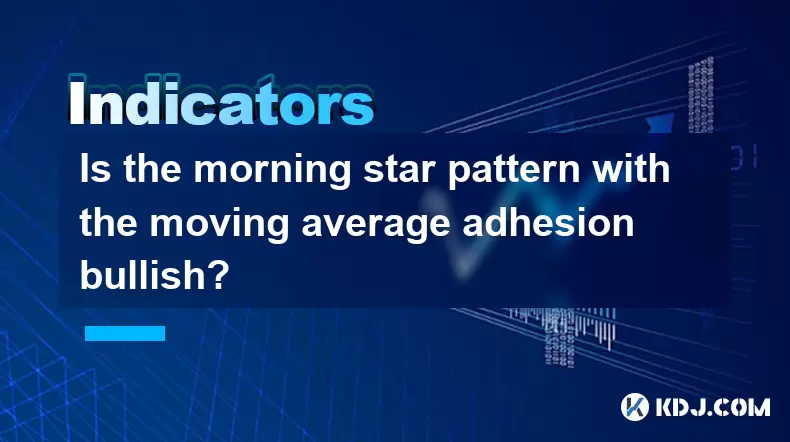
Understanding the Morning Star Pattern
The morning star pattern is a widely recognized candlestick formation in technical analysis, especially within cryptocurrency trading. It typically signals a reversal from a downtrend to an uptrend. The structure of this pattern consists of three candles: a large bearish candle, followed by a small-bodied candle (or doji) that indicates indecision, and finally a large bullish candle that confirms the reversal.
In the context of cryptocurrency markets, where volatility is high and price action can change rapidly, identifying reliable reversal patterns like the morning star becomes crucial for traders. However, relying solely on candlestick patterns without additional confirmation tools may lead to false signals. This is where integrating moving averages into the analysis becomes beneficial.
Morning star pattern is most effective when it appears after a sustained downtrend and is supported by other technical indicators.
What Is Moving Average Adhesion?
Moving average adhesion refers to a situation where the price of an asset closely follows or "sticks" to a particular moving average line over a period of time. In crypto trading, common moving averages used include the 50-period, 100-period, and 200-period simple moving averages (SMA) or exponential moving averages (EMA). When the price adheres to a key moving average, it suggests that the trend associated with that moving average has strong influence.
When a morning star pattern forms near or around a moving average that the price has been adhering to, it adds another layer of confluence to the trade setup. This scenario often increases the probability of a successful trade because both the candlestick pattern and the moving average are signaling potential bullish momentum.
Moving average adhesion enhances the validity of candlestick reversal patterns by acting as a dynamic support or resistance level.
How to Identify a Morning Star Pattern with Moving Average Adhesion
To determine whether a morning star pattern combined with moving average adhesion is truly bullish, follow these steps:
- Identify the trend: Ensure that the market has been in a clear downtrend before the formation of the morning star pattern.
- Locate the morning star: Look for the three-candle pattern consisting of a long red candle, a small-bodied candle (or doji), and a green candle that closes above the midpoint of the first candle.
- Check proximity to a moving average: Confirm that the pattern forms near a key moving average (e.g., 50 EMA or 200 SMA) that the price has previously respected as support or resistance.
- Analyze volume: Higher-than-average volume during the formation of the third (bullish) candle strengthens the case for a valid reversal.
- Look for additional confirmations: Use oscillators like RSI or MACD to verify oversold conditions or bullish divergence.
Combining multiple technical tools such as candlestick patterns and moving averages helps filter out false signals and improves trade accuracy.
Case Study: Morning Star and Moving Average Confluence in Crypto
Let’s take a hypothetical example using Bitcoin (BTC) on a daily chart. Suppose BTC has been in a downtrend for several weeks, consistently bouncing off the 200-day SMA. One day, a morning star pattern forms right at the 200-day SMA line. The first candle is a large red candle confirming continued selling pressure. The second candle is a doji, showing hesitation among traders. The third candle gaps up and closes well above the midpoint of the first candle.
This setup would be considered highly bullish due to the following reasons:
- The 200-day SMA acted as a strong support level, suggesting that buyers are stepping in at historically significant levels.
- The morning star pattern appeared exactly at that support zone, reinforcing the likelihood of a trend reversal.
- Volume spiked on the third candle, indicating increased participation from bulls.
- RSI was in oversold territory, aligning with the idea that downward momentum is exhausted.
Historical data shows that such confluence setups have led to strong rallies in many crypto assets when confirmed properly.
Common Pitfalls and How to Avoid Them
While the combination of a morning star pattern and moving average adhesion is generally bullish, traders must avoid certain pitfalls that can lead to losses:
- Failing to check the broader market context: A bullish pattern on a smaller timeframe may not hold if the overall market is bearish.
- Neglecting volume confirmation: Low volume on the third candle may indicate weak buying pressure and could invalidate the pattern.
- Ignoring resistance levels above the pattern: Even if the morning star is valid, nearby resistance zones might cap upward movement.
- Trading without a stop-loss: No pattern is 100% accurate; setting a stop below the lowest point of the pattern helps manage risk.
Risk management is critical even when dealing with high-probability setups like the morning star with moving average confluence.
FAQs
Q: Can the morning star pattern work without moving average adhesion?
Yes, the morning star pattern can still be valid without moving average adhesion, but its reliability increases significantly when combined with key technical levels like moving averages.
Q: Which moving averages are best for confirming the morning star pattern?
The 50 EMA and 200 SMA are commonly used for confirming morning star patterns. Traders often use them together to assess both short-term and long-term trend alignment.
Q: Should I enter a trade immediately after the morning star forms?
It's safer to wait for a confirmation candle after the morning star completes. Entering too early can expose you to fakeouts and false breakouts.
Q: How long should I hold a position based on this setup?
Holding time depends on your trading strategy. Day traders may exit within hours, while swing traders might hold for days. Always use trailing stops or profit targets based on support/resistance levels.
Disclaimer:info@kdj.com
The information provided is not trading advice. kdj.com does not assume any responsibility for any investments made based on the information provided in this article. Cryptocurrencies are highly volatile and it is highly recommended that you invest with caution after thorough research!
If you believe that the content used on this website infringes your copyright, please contact us immediately (info@kdj.com) and we will delete it promptly.
- Coinbase, Altcoins, and Listings: What's the Buzz?
- 2025-07-01 00:30:11
- Chainlink's Bullish Signals: Investors Bet on Long-Term Value
- 2025-07-01 00:50:12
- CICADA Finance Soars on BNB Chain: A TGE Deep Dive
- 2025-07-01 01:30:11
- MicroStrategy's Bitcoin Bet: Holdings, Sell-Off Concerns, and S&P 500 Dreams
- 2025-07-01 01:30:11
- XRPL EVM Sidechain: Ethereum dApps Unleashed on XRP Ledger!
- 2025-07-01 01:35:11
- Bybit, Kraken, and Tokenized Stocks: A New Era for Trading?
- 2025-07-01 00:30:11
Related knowledge
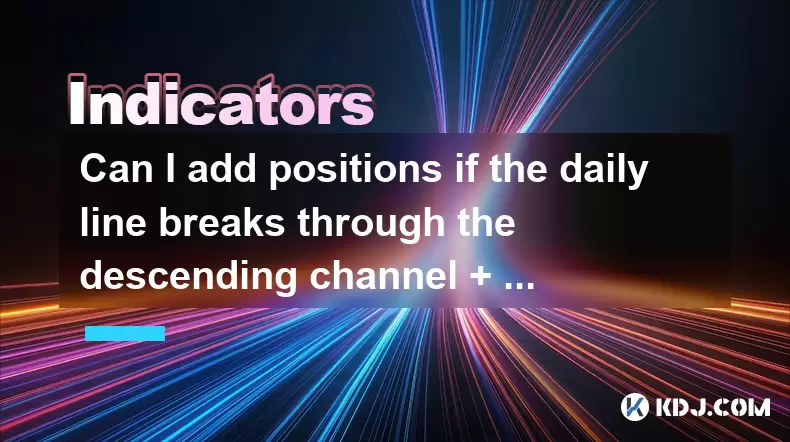
Can I add positions if the daily line breaks through the descending channel + the 30-minute moving average is in a bullish arrangement?
Jun 30,2025 at 11:00pm
Understanding the Descending Channel BreakoutWhen a daily line breaks through a descending channel, it indicates a potential shift in market sentiment from bearish to bullish. A descending channel is formed by drawing two parallel trendlines, where the upper trendline connects the lower highs and the lower trendline connects the lower lows. A breakout o...
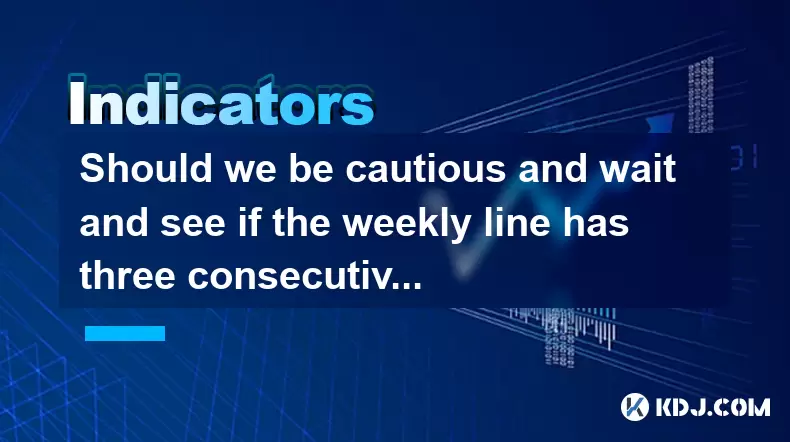
Should we be cautious and wait and see if the weekly line has three consecutive Yin lines + the daily MACD green column enlarges?
Jul 01,2025 at 12:42am
Understanding the Weekly Three Consecutive Yin Lines PatternIn technical analysis, three consecutive Yin lines on a weekly chart indicate a strong bearish trend. Each Yin line represents a week where the closing price is lower than the opening price, signaling consistent selling pressure. When this pattern appears three times in succession, it often sug...
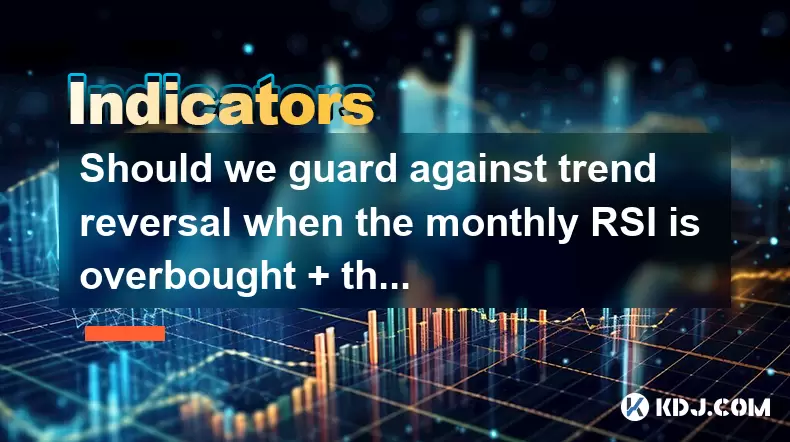
Should we guard against trend reversal when the monthly RSI is overbought + the weekly line has a long upper shadow?
Jun 30,2025 at 11:35pm
Understanding RSI Overbought Conditions in CryptocurrencyThe Relative Strength Index (RSI) is a momentum oscillator commonly used in technical analysis to identify overbought or oversold conditions in an asset. When the monthly RSI of a cryptocurrency reaches above 70, it is generally considered overbought, suggesting that the asset may be due for a pul...
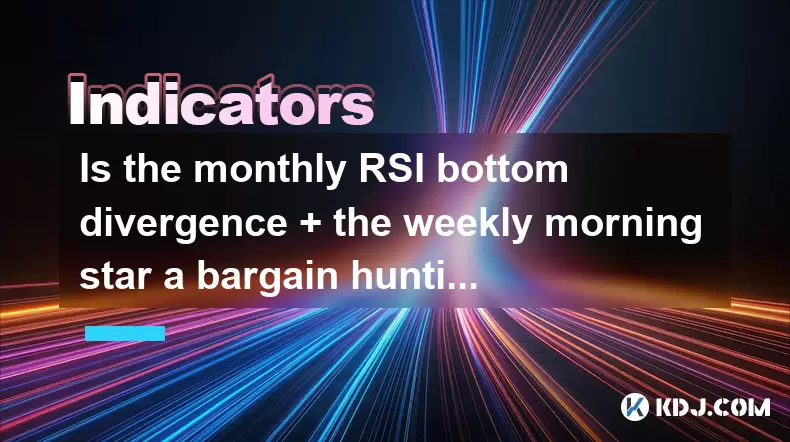
Is the monthly RSI bottom divergence + the weekly morning star a bargain hunting opportunity?
Jun 30,2025 at 09:57pm
Understanding RSI Bottom Divergence in Monthly TimeframesThe Relative Strength Index (RSI) is a momentum oscillator commonly used to identify overbought or oversold conditions in the market. When traders refer to a monthly RSI bottom divergence, they're observing a situation where the price makes a lower low, but the RSI makes a higher low on the monthl...
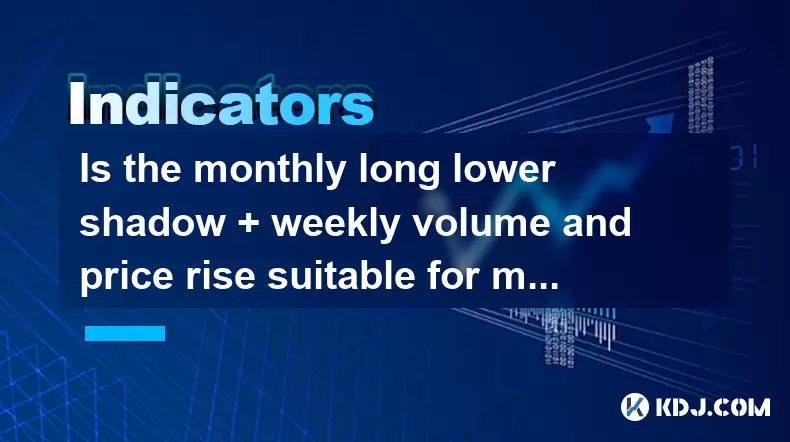
Is the monthly long lower shadow + weekly volume and price rise suitable for mid-term layout?
Jul 01,2025 at 01:29am
Understanding the Monthly Long Lower Shadow PatternA monthly long lower shadow candlestick pattern occurs when the price of a cryptocurrency drops significantly during the month but then rebounds to close near or above the opening price. This creates a candle with a long wick below and a relatively small body. In technical analysis, this pattern is ofte...
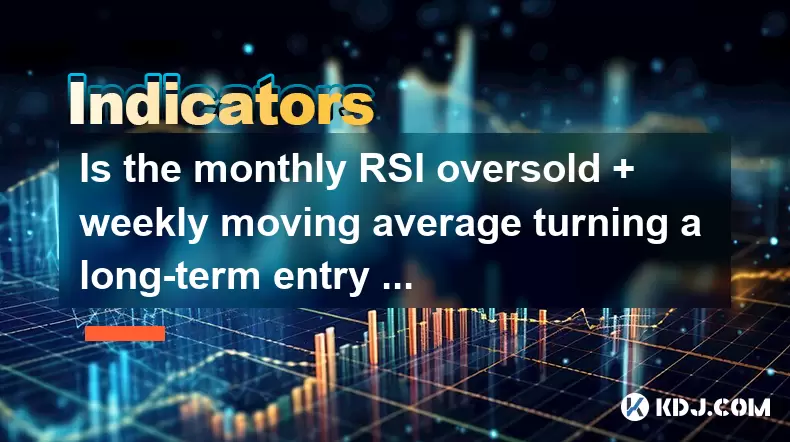
Is the monthly RSI oversold + weekly moving average turning a long-term entry signal?
Jun 30,2025 at 11:42pm
Understanding RSI and Its Role in Cryptocurrency TradingThe Relative Strength Index (RSI) is a momentum oscillator commonly used by traders to identify overbought or oversold conditions in the market. In the context of cryptocurrency, where volatility reigns supreme, understanding how RSI behaves on different timeframes becomes crucial. When the monthly...

Can I add positions if the daily line breaks through the descending channel + the 30-minute moving average is in a bullish arrangement?
Jun 30,2025 at 11:00pm
Understanding the Descending Channel BreakoutWhen a daily line breaks through a descending channel, it indicates a potential shift in market sentiment from bearish to bullish. A descending channel is formed by drawing two parallel trendlines, where the upper trendline connects the lower highs and the lower trendline connects the lower lows. A breakout o...

Should we be cautious and wait and see if the weekly line has three consecutive Yin lines + the daily MACD green column enlarges?
Jul 01,2025 at 12:42am
Understanding the Weekly Three Consecutive Yin Lines PatternIn technical analysis, three consecutive Yin lines on a weekly chart indicate a strong bearish trend. Each Yin line represents a week where the closing price is lower than the opening price, signaling consistent selling pressure. When this pattern appears three times in succession, it often sug...

Should we guard against trend reversal when the monthly RSI is overbought + the weekly line has a long upper shadow?
Jun 30,2025 at 11:35pm
Understanding RSI Overbought Conditions in CryptocurrencyThe Relative Strength Index (RSI) is a momentum oscillator commonly used in technical analysis to identify overbought or oversold conditions in an asset. When the monthly RSI of a cryptocurrency reaches above 70, it is generally considered overbought, suggesting that the asset may be due for a pul...

Is the monthly RSI bottom divergence + the weekly morning star a bargain hunting opportunity?
Jun 30,2025 at 09:57pm
Understanding RSI Bottom Divergence in Monthly TimeframesThe Relative Strength Index (RSI) is a momentum oscillator commonly used to identify overbought or oversold conditions in the market. When traders refer to a monthly RSI bottom divergence, they're observing a situation where the price makes a lower low, but the RSI makes a higher low on the monthl...

Is the monthly long lower shadow + weekly volume and price rise suitable for mid-term layout?
Jul 01,2025 at 01:29am
Understanding the Monthly Long Lower Shadow PatternA monthly long lower shadow candlestick pattern occurs when the price of a cryptocurrency drops significantly during the month but then rebounds to close near or above the opening price. This creates a candle with a long wick below and a relatively small body. In technical analysis, this pattern is ofte...

Is the monthly RSI oversold + weekly moving average turning a long-term entry signal?
Jun 30,2025 at 11:42pm
Understanding RSI and Its Role in Cryptocurrency TradingThe Relative Strength Index (RSI) is a momentum oscillator commonly used by traders to identify overbought or oversold conditions in the market. In the context of cryptocurrency, where volatility reigns supreme, understanding how RSI behaves on different timeframes becomes crucial. When the monthly...
See all articles

























































































